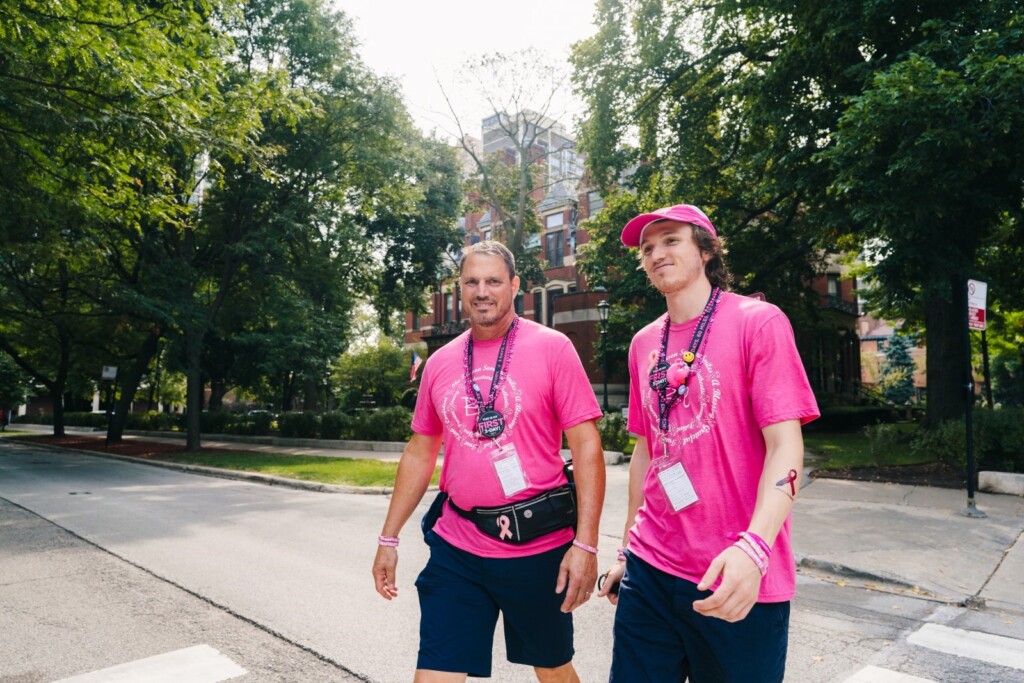Well, it’s official: summer is here! While we know that enjoying ice cream on a boardwalk, or taking in a beautiful sunset from the front porch are wonderful seasonal hallmarks, prepping for the 3-Day can be a year-round undertaking. Now that the frost has given way to sunshine, it’s probably time to trade in those thermal leggings for shorts, and winter hats for sunglasses. While the routine may be similar to the training from this past winter and spring, the distances are longer and, chances are, your resolve greater. Still, fighting through snow flurries and icy climates can be very different than taking on the sweltering heat or a muggy atmosphere. Not to worry! Read on to learn more about getting the most out of your training this summer.
- Hydrate, hydrate, hydrate! Our bodies are made of approximately 60% water so, generally, making sure we’re providing our brains, muscles, etc. with enough H?O is critical. This grows even more important once someone is engaging in strenuous physical activity, like gearing up for a 3-day, 60-mile endurance walk. And once you factor in an energy-draining sun? Well, let’s just say that water will be your best friend. (Here’s a tip: if you’re feeling thirsty, you’re already dehydrated!) Whether it’s before, during, or after you’ve been out on the road, do a self-check as needed to provide your body with those necessary fluids.
- Dress your best. Now that you’ve thawed out a bit from the chill of the previous months and gotten through the spring rhythm, your wardrobe has probably already undergone at least one or two separate overhauls. Well, now it’s time for one more. It doesn’t matter if it’s bamboo fiber, spandex, nylon, etc., the goal is to provide your skin with performance-enhancing fabrics. That means dressing in cooling, breathable, and sweat-resistant/moisture-wicking clothing that will combat the scorching summer sun. You know yourself better than anyone, so trust the items that make you feel most comfortable and effective as you get your miles in.
Don’t forget, summer training walks are a great time to purchase your new set of sneakers before you head to the 3-Day. You don’t want to come to the 3-Day with brand new sneakers, so now is the time to find the perfect pair and start wearing them in. Rack up a few miles to test them out, avoid blisters and get ready for 60 miles.
Tip: Check out these blogs to help you pack your fanny pack for training walks and event weekend! Here and here.
- A win for skin. Though many of us might enjoy the training bonus benefit of tanning with each step, protecting yourself from the sun’s harmful rays is a must. Whether you opt for a chemical sunscreen over mineral sunscreen, a gel base over a spray, or SPF of your choosing, doing the proper research to become educated on your specific skincare needs is the smartest course of action. (That means using sunscreen even on cloudy days. Just because you can’t see the sun, that doesn’t mean the sun can’t see you!) Even better for your skin, check out our next tip.
- Stride at sunset. Although it’s wise to plan your winter training calendar to soak up as much warmth as possible, the opposite is true during the summer. If you can, rethink your schedule to limit your exposure to the sun. Relegating yourself to the earlier mornings or late afternoons/evenings will not only help benefit your skin’s health, but also cause less stress to your internal thermometer by keeping you cooler. Checking the forecast on a regular basis will allow you to be aware of sunrise and sunset, thereby letting you know when things like the temperature or humidity will probably be at their peaks. Additionally, where you walk can make just as much of a difference as when you walk. Trading in blacktops and hot city sidewalks for tree-covered trails or waterfronts can also shield you from some of the harsher elements.
The points above can be summarized with one word: grace. As the mileage expands and the air grows hotter, continuing to push yourself while also making sure that your well-being remains your top priority is essential. That means being extra mindful of factors like Code RED weather warnings, heat exhaustion, and dehydration. Sometimes practicing self-care requires stopping to grab some water, investing in quality athletic apparel, shielding your skin from the sun, or reworking your schedule to avoid walking outside during times that are less than ideal. Training is an opportunity to work both your physical and mental muscles, but in a safe way. Listen to your body and make sure you’re being smart and strategic as you continue prepping for 3-Day season.
Have you got any tips of your own to share? Feel free to do so in the comments below. Happy walking!
*Health, safety and training tips in this blog should not be considered medical advice. Consult with your physician for any medical needs you may have.*





